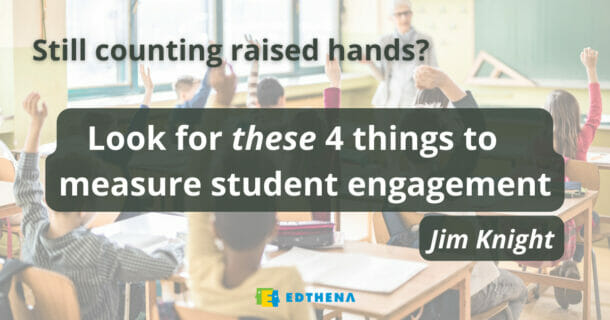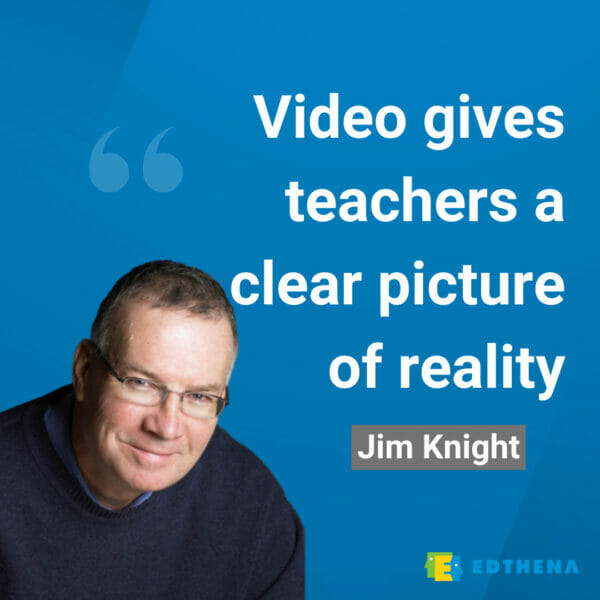The 4 Things You Should Be Looking for to Measure Student Engagement

Counting the number of raised student hands to measure student engagement?
There’s a lot more to understanding the engagement of a strong classroom, according to professional learning expert Jim Knight.
In fact, there are four indicators that teachers, instructional coaches, and school leaders can look for to understand students’ engagement in learning—and none of them involve hand-raising.
Jim Knight, author of “The Definitive Guide to Instructional Coaching,” talked with Edthena founder Adam Geller during a PLtogether Lounge Talk and shared his suggestions for discovering insights about classroom environments.
Read on for the highlights and the four ways to measure student engagement, or scroll down to watch the full conversation.
How to measure student engagement in the classroom
Measuring student engagement can provide insights for supporting classroom learning and help determine classroom or schoolwide goals.
Student engagement can take many forms. Cognitive engagement (mental effort) and emotional engagement (psychological safety) can be difficult to identify or analyze visually.
However, behavioral student engagement is easier to observe in the classroom. Jim Knight offered educators four concrete things to look for when trying to measure student engagement of this type:
- Time on task. Are students doing the task presented to them? Check out this resource for Assessing Time on Task from Jim Knight’s Instructional Coaching Group.
- Responses to questions. How many students and how often do students respond to teacher questions? What are the accuracy and depth of student responses?
- Classroom disruptions. How many students and how often are students disruptive?
- Instructional time. How much of the lesson was productive? For example, you might subtract the amount of transition time needed from the total length of the lesson.
For teachers, coaches, or principals looking at classrooms, it is important to measure student engagement as data to then enable more robust learning environments.
With these insights, teachers can set PEERS goals for effective classroom instruction and leaders can share best practices for student engagement schoolwide.
Classroom video is key to looking for student behavioral engagement
Knowing what to look for to measure student engagement is the first step.

But, if you’re a teacher, it’s hard to accurately keep track of the number of student disruptions while they’re happening or monitor all students’ time on task simultaneously.
For instructional coaches and leaders, finding time to visit classrooms is challenging, and observational feedback can feel subjective.
That’s where video comes in. Jim Knight said, “Video gives us another lens on what’s happening in the classroom.”
One way to assess or measure student engagement could be for a teacher to record their own classroom and then review the video while reflecting on a few of Jim Knight’s questions above.
Or, those who support teachers can asynchronously watch recorded classroom videos and provide feedback on the “clear picture of reality.”
Video is an easy way to capture students’ behavioral engagement for insights about classroom instruction and learning.
Measuring classroom engagement provides insights into student learning
Jim Knight emphasized there are key indicators to understanding classroom engagement.
For stronger insights when you measure student engagement, look for time on task, student responses, classroom disruptions, and productive instructional time.
Observing for these examples of student behavioral engagement can be logistically tricky in real-time, but capturing classroom video can help.
Learn how Edthena Video Coaching helps instructional coaches give feedback on teachers’ classroom engagement.



